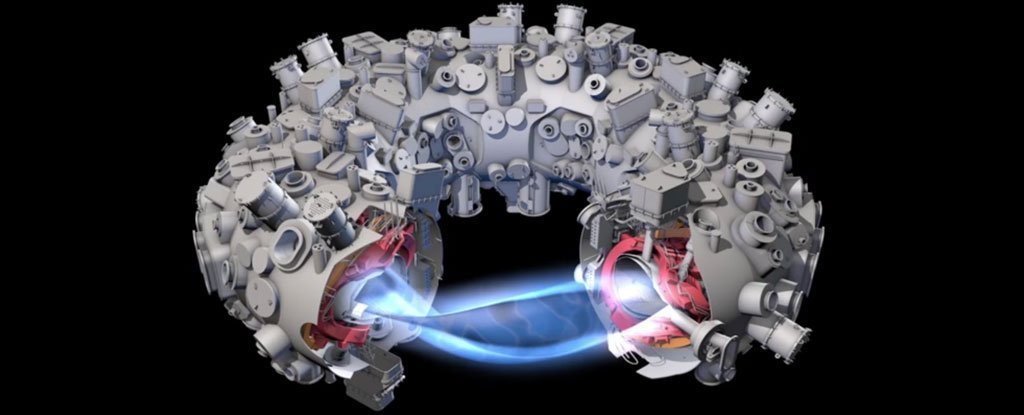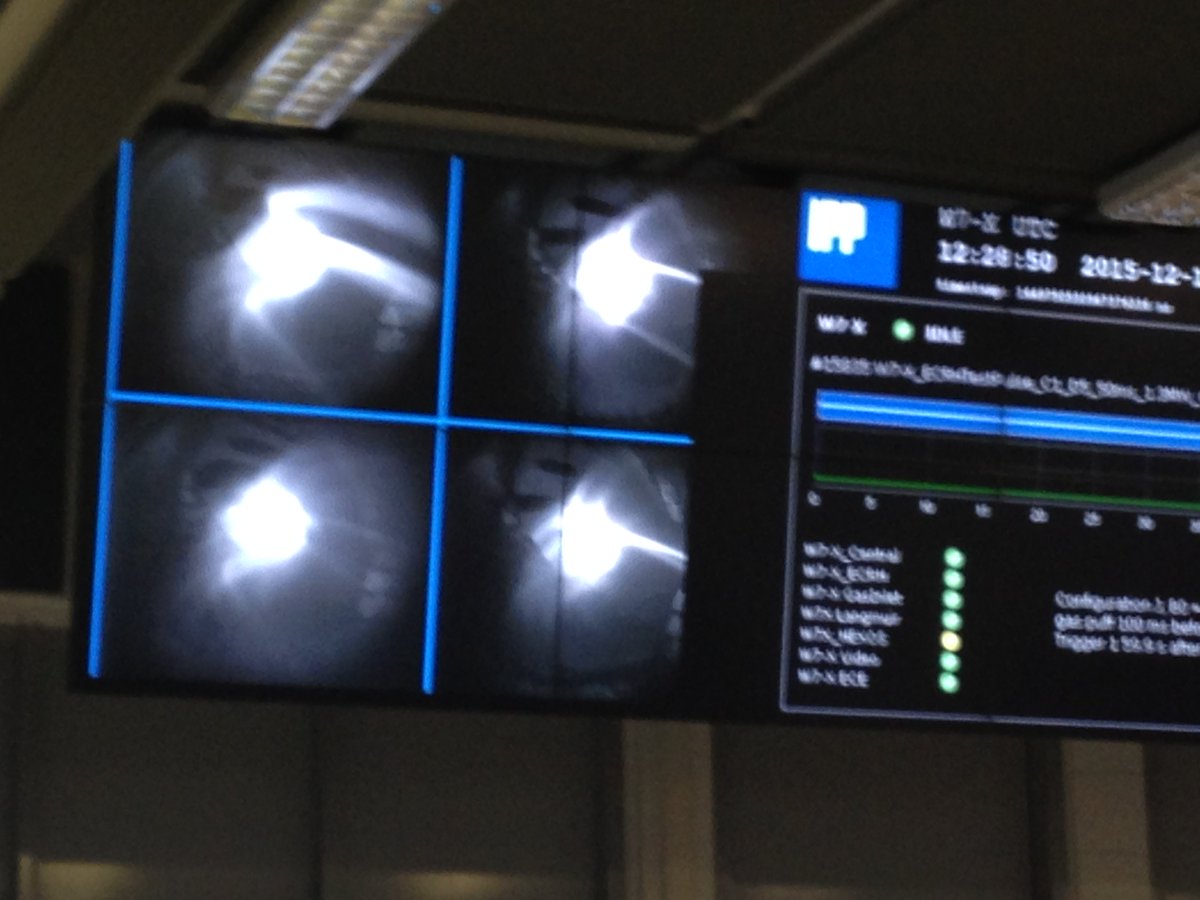
You probably didn’t notice, but a few days ago, the world took a huge step towards the goal of achieving clean, limitless energy through nuclear fusion.
Physicists in Germany announced that they’ve just fired up one of the world’s largest nuclear fusion machines for the first time – and it was successfully able to contain super-hot blobs of helium gas, otherwise known as plasma.
The 16-metre-wide machine is the Wendelstein 7-X (W7-X) and it’s a type of nuclear fusion device called a stellarator. Scientists have been talking about the enormous potential of stellarators for decades, but this is the first time a team has shown that it can produce and control plasma just as well as other fusion reactor designs.
On 10 December, the Max Planck Institute for Plasma Physics tweeted out this incredible image of its new machine’s first plasma:
Nuclear fusion occurs when atoms fuse together at incredibly high temperatures and generate energy, and the reason scientists are so excited about it is because it has the potential to produce an almost-unlimited supply of energy from little more than salt water. This is the same process that’s fuelled our Sun for the past 4.5 billion years, and is predicted to continue doing so for another 4 billion years.
Unlike nuclear fission, which powers today’s nuclear power plants, nuclear fusion also doesn’t produce any radioactive waste, and is a whole lot safer.
But it’s also been incredibly tricky for scientists to achieve, because it requires them to construct a device that can produce and control a 100-million-degree-Celsius blob of plasma.
Science Alert
